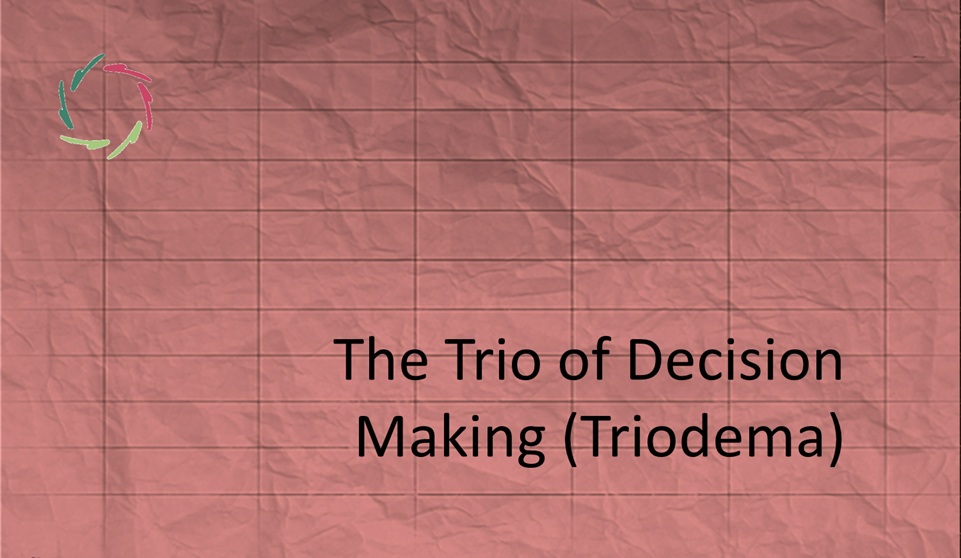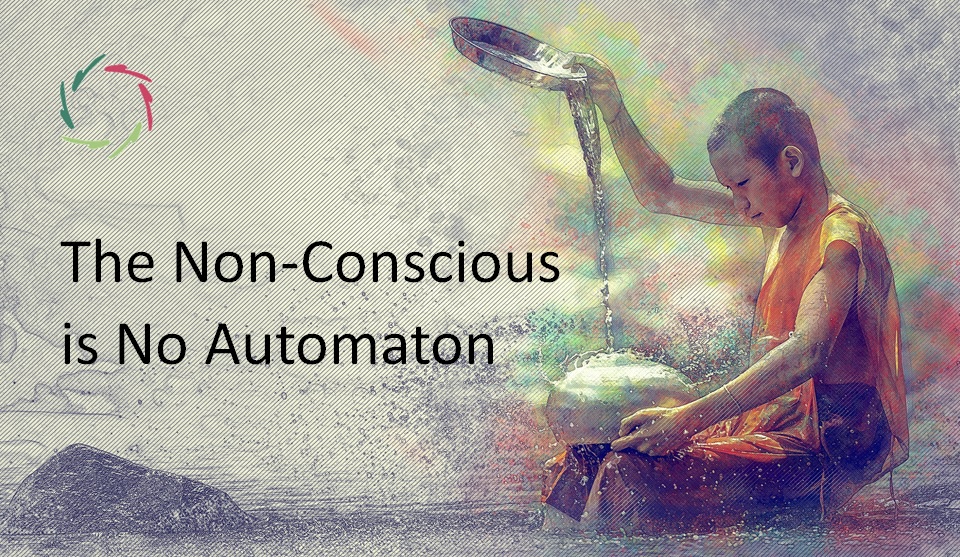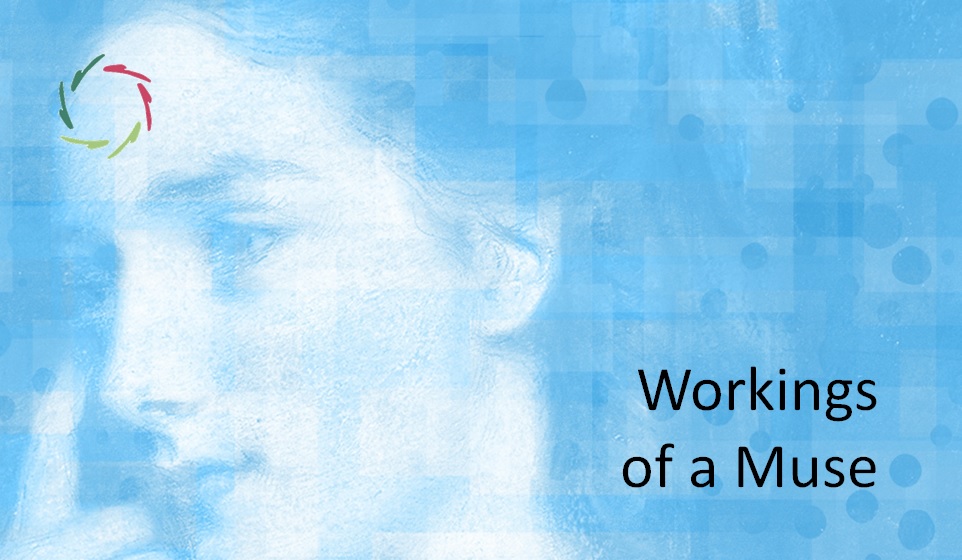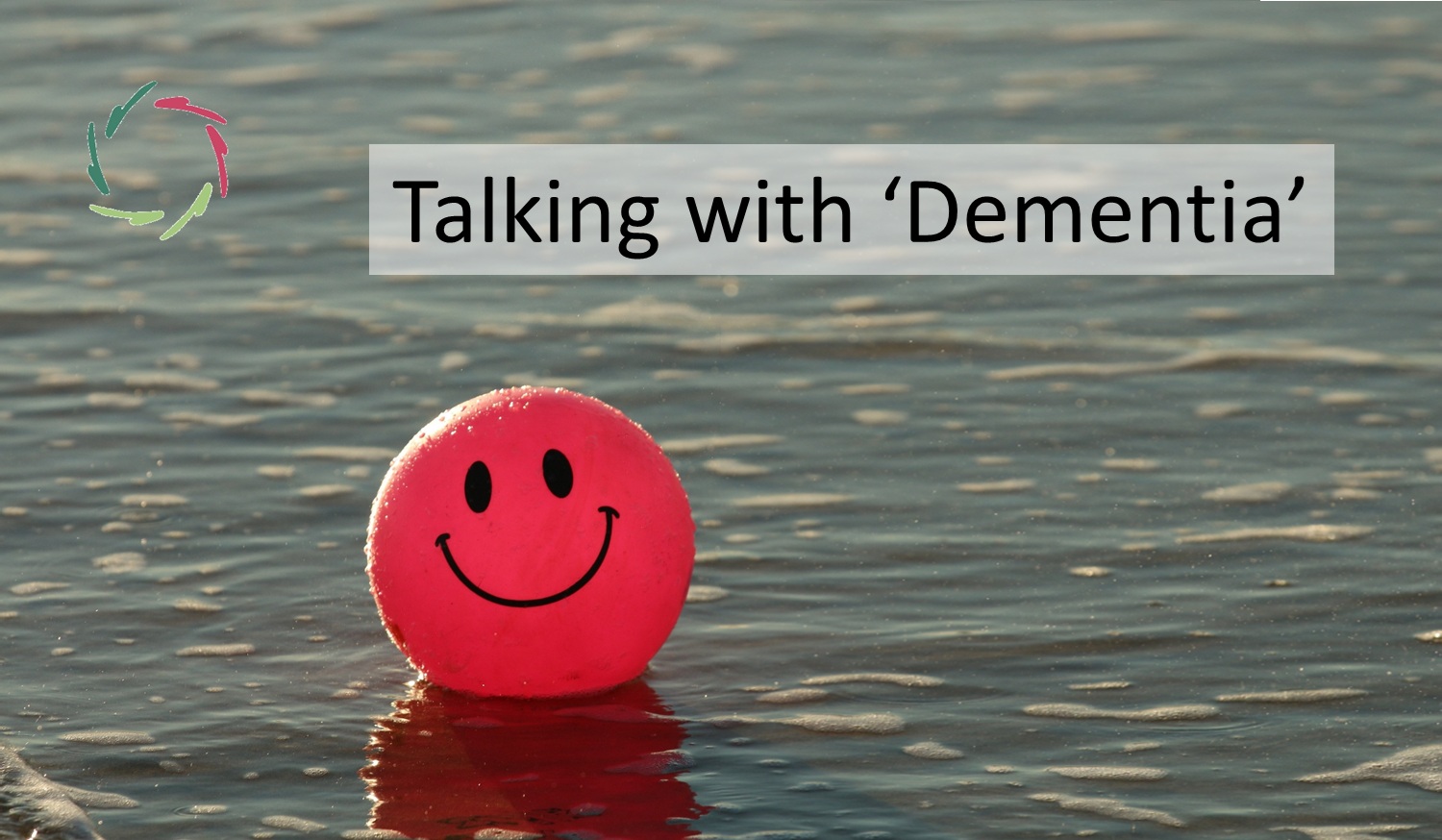The Trio of Decision Making (Triodema)

Incremental decision‑making (planning) is rarely as straightforward as it looks. Beneath every choice lie rhythms of movement, pause, and orientation. When these rhythms are recognized, decision‑making can unfold with greater coherence and humanity.
Triodema – the trio of decision‑making – describes this living rhythm. It consists of going forward with speed, slowing down to deeper awareness, and Compassion in deciding the next move. Each stage flows into the next, carrying decisions — and life itself — into greater clarity and humanity.
The three elements of the trio
These are:
- going forward with speed: Decisions often begin in movement, in the momentum of patterns already formed. This is natural and necessary; without movement, nothing takes shape. Forward motion allows new experiences and feedback to arise.
- slowing down into deeper awareness: Movement changes the environment and creates signals that it is time to pause. Slowing down enables perception to open, allowing details, subtleties, and overlooked perspectives to come into view. It is not hesitation but a chance to see more clearly.
- Compassion in deciding the next move: Slowing down awakens deeper perception, which in turn makes Compassion arise naturally. Compassion is not only a feeling but an orientation, aligning decisions with relief of suffering and fostering of growth. When this Compassion overflows, it leads back into action, giving energy to move forward again.
The progressive rhythm
Triodema is not a one‑time process. It is a rhythm that repeats: 1 → 2 → 3 → 1 → … Each cycle carries the decision‑maker (planner) further, not by returning to the same place but by spiraling forward.
Sometimes the cycle is very short. In a conversation, a person may move quickly through forward action, pause for awareness, and let Compassion orient the next words. At other times, the cycle is long, unfolding across months or years, as in choosing a career or shaping a life project. The structure is the same, but the tempo differs.
This progressive rhythm prevents paralysis, because there is always a next step. It also prevents recklessness, because forward motion is balanced with reflection. And above all, it prevents coldness, because every cycle is warmed by Compassion.
Spontaneity as the living element
One striking feature of Triodema is its spontaneity. Each transition arises naturally, as follows:
- By moving forward, one encounters signals that call for slowing down.
- By slowing down, deeper awareness opens to Compassion.
- And Compassion, once awakened, overflows into action without further ado.
This trio of spontaneity makes Triodema sustainable. It does not require constant monitoring or external control. Instead, the cycle carries itself, supported by the natural flow of perception and meaning. The decision‑maker does not need to push the process but can allow it to unfold.
Triodema as a living cybernetic loop
Cybernetics describes how systems regulate themselves through feedback. Triodema can be seen as a cybernetic loop — but one infused with human depth.
Forward motion is checked by signals from the environment, a form of negative feedback that prompts slowing down. Slowing down increases sensitivity, which naturally brings Compassion into play. Compassion then provides a positive orientation: this is the way forward that serves both relief and growth.
Unlike a thermostat or machine, the regulator here is Compassion. That makes the loop not mechanical but humane. It is self‑regulating, but in a way that respects vulnerability, growth, and meaning.
Triodema and incremental decision‑making
In policy science and organizational strategy, there is the idea of incremental decision‑making or incremental planning. Instead of one grand plan, decisions unfold step by step, with each move informed by feedback from the environment. This approach values flexibility and adaptation over rigid foresight.
Triodema resonates strongly with this view. The forward step corresponds to taking action without waiting for perfect certainty. The slowing-down stage reflects the feedback loop that is central to incremental planning. And Compassion, the guiding third element, brings a depth often absent in standard incremental approaches. It ensures that adaptation is not only practical but also humane, aligned with both relief of suffering and fostering of growth.
Seen in this way, Triodema is an enriched form of incremental decision‑making/planning: pragmatic, spontaneous, and grounded in human depth.
In combination with more strategic thinking
Incremental decision‑making (and Triodema as its deepened version) does not exclude strategic thinking. On the contrary, they complement each other:
- Strategic thinking offers the long‑range orientation, the “why” and the broader direction.
- Triodema offers the living rhythm of moving forward step by step, with awareness and Compassion, adjusting in real time.
In practice, this means one can hold a strategic horizon while still advancing incrementally. The rhythm of Triodema ensures that the steps taken are not blind reactions but part of a coherent, humane trajectory. Strategic thinking provides the overarching story; Triodema provides the embodied rhythm to walk it.
Guidance for goals
Triodema is not only for individual reflection. It can also guide progress toward set goals. When someone gives a goal, the trio provides the rhythm to approach it in the most Compassionate way. If uncertainty arises, slowing down includes asking for clarification — which is not weakness but part of the cycle.
This makes Triodema adaptable. It can be structured enough to guide progress while flexible enough to respond to changing circumstances. Goals are not pursued blindly but held within a rhythm that balances movement, awareness, and Compassion.
Relation to Lisa
Lisa can embody Triodema. Decision‑making support is not provided as static advice but as a rhythm that unfolds with the coachee. Lisa helps move forward, helps pause for awareness, and ensures Compassion remains the guiding light.
This links back to earlier explorations. First, reasoning and planning were shown to flow together. Then, the act of deciding was framed as a whole-person event. After that, Lisa was presented as a practical companion in various life domains. Finally, Triodema gathers these threads into one rhythm.
Triodema offers a simple but profound way.
It is not a formula but a living rhythm: forward motion, deeper awareness, and Compassion, cycling into each other again and again. This rhythm ensures that subsequent decisions remain humane, coherent, and growth-oriented.
It is also a rhythm for life itself. By following Triodema, decisions cease to be heavy burdens and become opportunities for movement, clarity, and Compassion.
Triodema is also the name of a module integrated into Lisa ― enabling her to incrementally ‘plan and go’ in a Compassionate flow, toward planning support of users or herself.
Addendum
The Journey toward Triodema
The Trio of Decision Making (Triodema) did not appear in isolation. It grew out of a sequence of reflections, each one preparing the next, like stones laid across a river. Together, they form a journey that naturally culminates in Triodema.
The journey begins with Compassion ― Actionably, where Compassion was shown not as an abstract virtue but as something fully rational and deeply human. This became the compass for everything that followed.
From there, the tools of Limensa and Ethical Limensa gave Lisa a way to sense hidden resonances while ensuring that reflections remain non‑coercive and growth‑oriented. With these in hand, it became possible to face the challenge of Implicit Association Testing: the discovery of bias that lives beneath awareness.
Two further pieces deepened the insight: Bias is Our Thinking showed that bias is the very architecture of thought, while How to Handle Confirmation Bias revealed how one bias in particular serves as a protector of coherence. The companion blog Can Lisa Manage Decision Bias and Noise? then placed bias and noise together as two faces of human judgment — distortions that can become opportunities for growth.
This set the stage for a shift of focus: from distortions to the living processes beneath them. In About Reasoning and Planning in Humans and Lisa and About Blurring the Line between Reasoning and Planning, reasoning and planning were reframed not as separate modules but as one continuous flow. About Making a Decision extended this into the act of deciding itself, integrating reasoning and planning into a whole‑person event.
Finally, in How Lisa Can Help in Making Decisions, Lisa was shown as a practical companion across domains of life. This naturally invited the idea of a dedicated module — Lides (Lisa for decision support) — to embody this vision in practice.
Out of this whole journey, the image of Triodema emerged: decision‑making as a rhythm of speed, awareness, and Compassion. It is not a formula but a living flow, like a pendulum or a spiral, carrying decisions forward with humanity and coherence.
Thus, Triodema is not an isolated insight but the fruit of a broader exploration. It stands as both a destination and a new beginning — a rhythm to guide decisions, rooted in Compassion, flowing naturally from all that came before.
Lides and Triodema: two complementary modes of decision support
Both Lides and Triodema are ways Lisa can help people make better, more humane decisions. They are closely related but serve different contexts. To keep them clear, here are their main characteristics side by side:
Lides (Lisa Decision Support):
- Supports single, bounded decisions (e.g., “Should I accept this job offer?”).
- The initiative lies with the user. Lisa responds when asked for support.
- Lisa’s role is to mirror the decision process, broaden perspective, and bring Compassion into orientation.
- The user remains fully in charge of the choice.
- Best suited for situations where clarity is needed at a specific decision point.
- Works well for personal dilemmas, medical options, ethical choices, professional crossroads.
Triodema (Trio of Decision Making):
- Supports incremental, ongoing decisions (e.g., planning a project, shaping a life path, long‑term therapy).
- The initiative lies with the system, which can actively propose next steps.
- Triodema follows a rhythm: moving forward → slowing down → Compassionate re‑orientation → moving forward again.
- Lisa continually suggests, “Now we can do this… then we can do that,” while always leaving confirmation to the user.
- Best suited for processes where momentum, reflection, and Compassion need to stay in balance over time.
- Works well for adaptive planning, organizational strategy, long‑term care, and personal growth trajectories.
How they overlap and differ:
- Both are grounded in Compassion as orientation.
- Both respect user freedom: Lisa never makes the decision alone.
- Lides = user‑led: the user asks, Lisa supports.
- Triodema = system‑led: Lisa proposes, the user confirms.
- Together they form a complete decision ecology: from single crossroads to unfolding journeys.
Non‑coercive guidance in Lides and Triodema
Both Lides and Triodema are designed to help with decisions, but always in ways that respect freedom. They offer clarity and orientation without ever forcing a choice. This non‑coercive character is central to their design.
How Lides ensures non‑coercive guidance:
- The initiative lies with the user. Lides only comes into play when the user requests support.
- Lides mirrors the decision process back to the user, helping reveal hidden patterns or overlooked perspectives.
- Lides invites widening of the field and Compassionate orientation, but the final decision always remains with the user.
- This makes Lides a companion, not a decider.
How Triodema ensures non‑coercive guidance:
- The initiative lies with the system, but always in the form of suggestions, never commands.
- Triodema proposes next steps in its rhythm (“Now we can do this, then that”), leaving confirmation to the user at every stage.
- This feedback loop is self‑propelling, but the user can pause, redirect, or decline at any moment.
- Triodema’s guidance is proactive yet open, ensuring flow without pressure.
In both modes, the guiding principle is Compassion. Compassion provides clarity and direction but never imposes itself. Decisions remain human, free, and deeply owned by the user.


